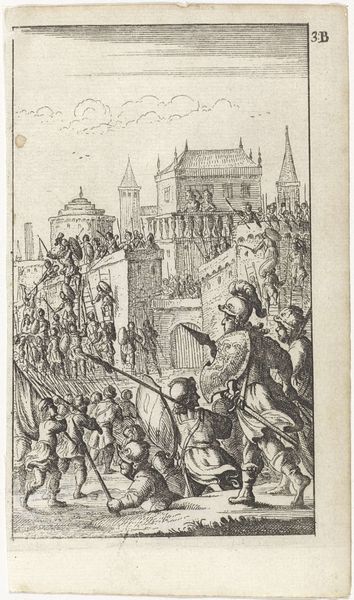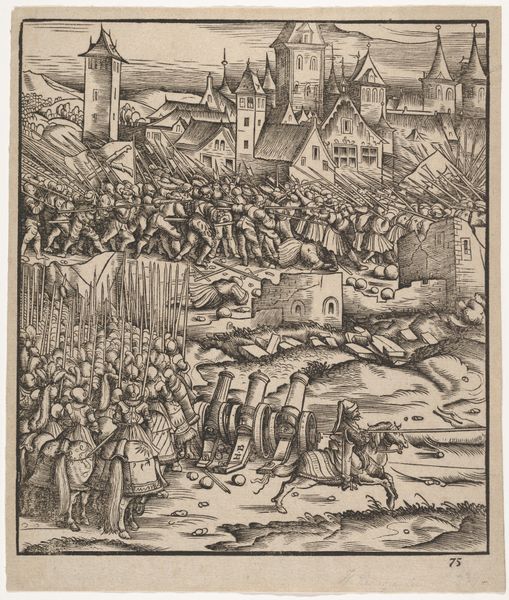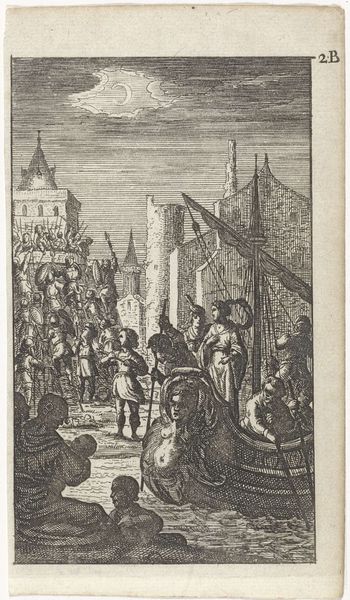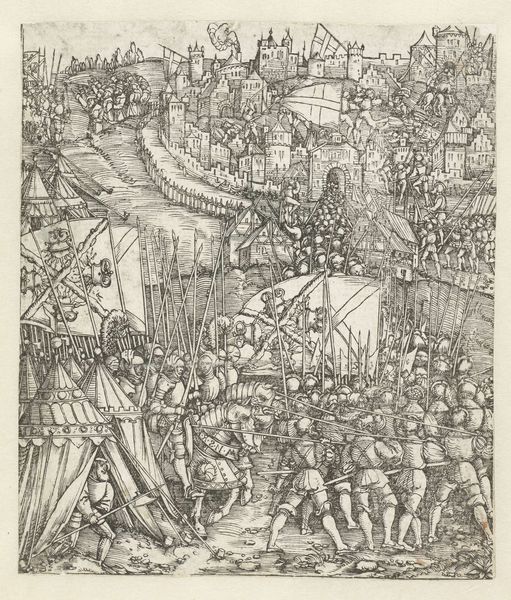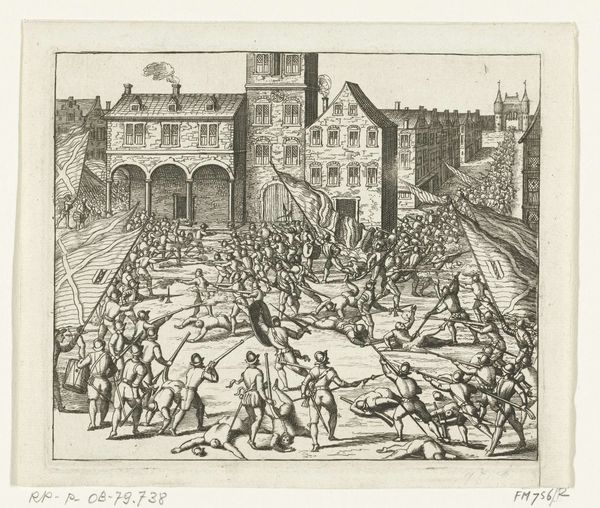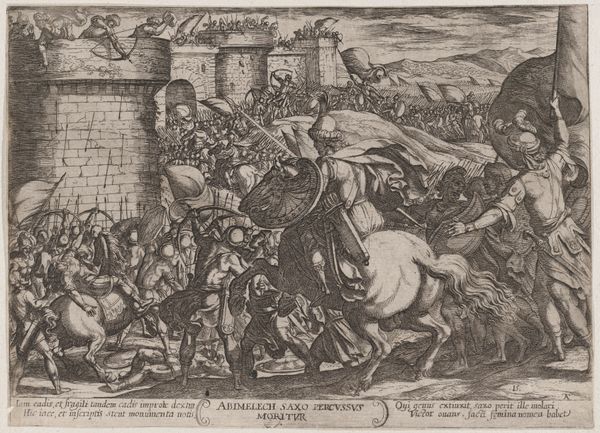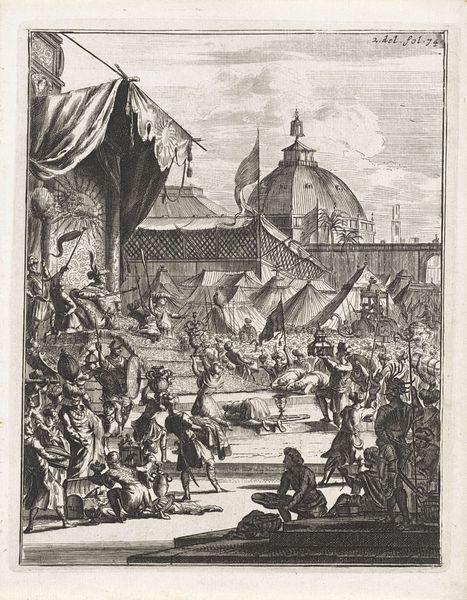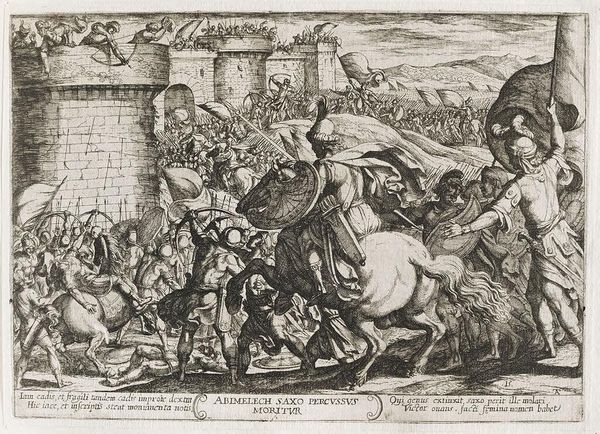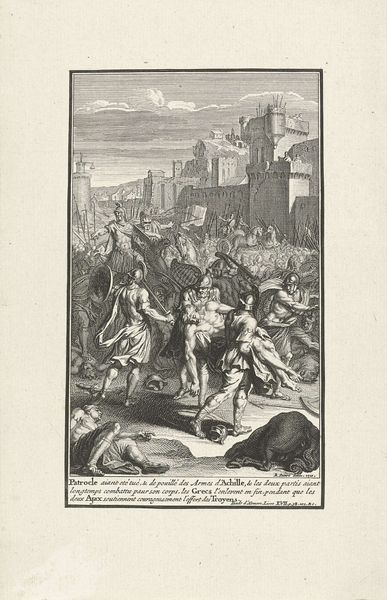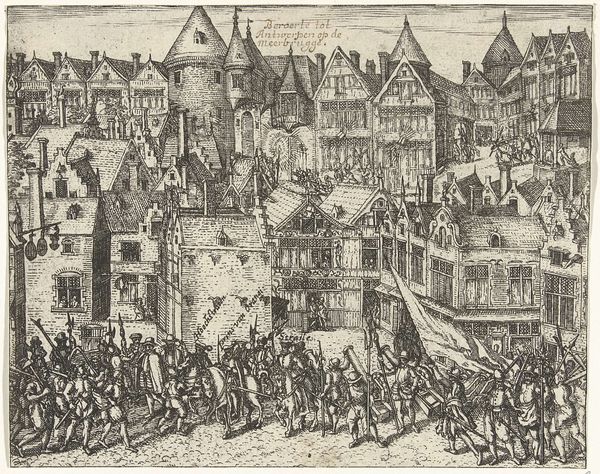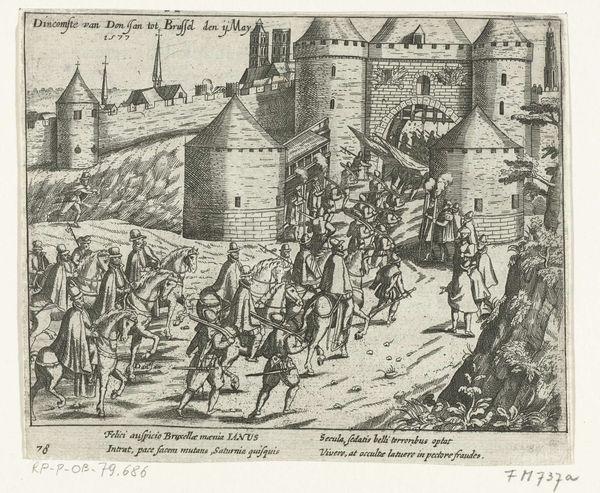
print, engraving
#
narrative-art
#
baroque
# print
#
figuration
#
line
#
cityscape
#
genre-painting
#
history-painting
#
engraving
Dimensions: height 129 mm, width 71 mm
Copyright: Rijks Museum: Open Domain
Curator: What strikes me immediately is this chaotic energy – all those bodies scaling the walls, the frenzied movement… it’s quite visceral, wouldn’t you say? Editor: Absolutely. Let's dive in. What we're looking at is an engraving titled "Soldiers Storming a Castle," created by Abraham Dircksz. Santvoort around 1666. The print itself offers a snapshot of baroque narrative art. Curator: The figures are really packed in; you can feel the crush. And it's interesting how the artist rendered the textures of the stone, contrasted with the fabric of the flags. I wonder about the socio-political factors at play during the Dutch Golden Age? What did the printing techniques involved signify during that era? Editor: The detailed line work certainly tells us a lot about printmaking practices during that time. Engravings like these were relatively accessible forms of image production. This would have allowed a wider audience to visualize or maybe even reimagine historical or political events. The lines denote not just form but also delineate class and labor involved in siege warfare. Curator: And thinking of labor, imagine the effort to build and breach a castle like that. The raw human force on display! Is it a commentary, perhaps, on power and its very human cost? Editor: It's definitely charged with questions about authority and agency, especially given its place in history. Considering the materials available to Santvoort, and how it translates a violent scene for early consumption is also telling of their narrative purpose and use as records. The city and the landscape—along with the soldiers who enact state sanctioned violence against the place—suggest much more about seventeenth-century Dutch sensibilities of civic pride and national identity during periods of conflict. Curator: Looking at the piece, I initially felt only this sense of overwhelming commotion, and you've reminded me to also reflect on the actual historical context. And for a final personal touch… the silhouetted figures observing in the bottom corner suggest voyeurism and participation – that tension remains relevant even now. Editor: A vital reminder that art doesn't just depict; it invites engagement. I walked away from this viewing re-attuned to how the materials of art connect the dots across labor, image, and social consciousness.
Comments
No comments
Be the first to comment and join the conversation on the ultimate creative platform.
